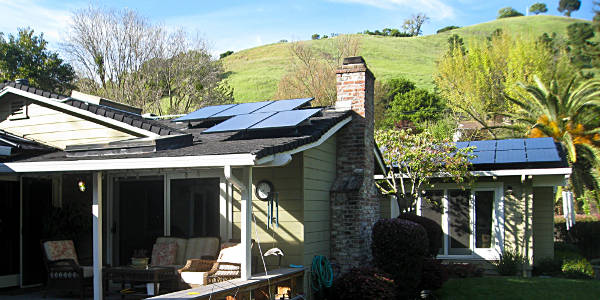PG&E claims home solar is racist, wants to gut program
November 10, 2021

OPINION by REUBEN LY
Next year, your solar panels could cost you more than your monthly internet or cable TV bills, that’s because PG&E is trying to increase their bottom line by tying home solar to racism. The utility is claiming rich, white people are the primary installers of rooftop solar, so they should lose their economic benefit.
Rooftop solar is taking $3 billion a year from PG&E’s revenue, their estimate. Everyone else benefits from clean rooftop solar, but the utility companies.
This is not a joke.
PG&E and two other California utilities have proposed a new $90 per-month “solar connection fee,” along with an 80% reduction in the payment solar panel owners receive for energy sent back to the grid (called net metering). You would essentially be paying PG&E for your own solar power.
Crazy, right?
If the California Public Utility Commission approves this proposal in December, it will crush the solar industry. And that seems to be their intention.
Over 700 local solar installers could be out of business next year if this regulation passes in full, and 68,000 people out of work. Who would buy solar panels without any financial benefit?
This exact thing happened in Nevada in 2015. The major utility there rolled back net metering, and the industry lost an estimated 2/3 of their jobs overnight. So, this is a very real threat.
This is the second time this year that PG&E, Edison, and SDG&E have together brought forth this Net Metering Agreement 3.0 (NEM 3.0) proposal.
They were crushingly defeated this summer in the State Senate with AB 1139, which would have compelled the California Public Utilities Commission (CPUC) to adopt NEM 3.0. However, that attempt was largely viewed as a bait and switch to confuse the public. The real fight is now taking place out of public view directly with the CPUC, with a ruling scheduled for Dec 10th.
The CPUC are the final decision makers.
Our climate cannot take any backwards progress on clean energy! So, what is PG&E’s argument for trying to kill rooftop solar? Solar is reverse Robin Hood?
In essence, the utilities’ main argument for the overhaul is that net metering represents a “cost shift” from high income to low income people in the state – and that “regular ratepayers” are now carrying the cost-burden of maintaining the grid, while solar owners (who tend to be whiter and wealthier) get paid.
This is a pretty good spin. In fact, they spent $20 million this year on lobbyists to come up with it.
However, they’ve got the facts wrong on several key points.
First, someone has to invest in clean energy – it’s never free. Whether it is your neighbor spending $15,000 on rooftop panels, or PG&E spending $15 billion on a solar farm (and long distance transmission wires), ratepayers will always need to reimburse the cost of those investments.
Second, rooftop solar is cheaper than building solar farms. Why? Mainly because rooftop solar does not require long distance power transmission lines, which, by the way, spark wildfires.
Building out rooftop solar as a key part of reaching ‘net zero by 2050’ is a staggering $120 billion cheaper than relying only on long-distance solar farms.
That equals a savings of $300 per ratepayer per year, for the next thirty years. Amazing, right?
So, if rooftop solar is actually much cheaper, why would we pay more as a state and as ratepayers for solar power? And slow down the rate of adoption of clean energy?
In the utilities’ point of view, they don’t really care how quickly we get to net zero. Their main concern is to reap the profits from that transition to clean energy. And they don’t have access to our rooftops.
They are promising to be the custodians of our clean energy future. But our climate can’t wait for empty promises.
While PG&E embarks on decade-long environmental impact studies and planning approvals, rooftop solar is roaring ahead. We already have a million solar roofs in California, leading the nation. But still, only 6% of utility customers have solar panels. There is so much more potential.
Each year, as the tech gets less expensive and new innovative business models spring up, more lower and middle income people are getting solar. Meaning, this model – unlike the utility – has the potential to become evermore democratic each year, and distribute the wealth of energy in a way that central utility-owned projects never could.
And that, fundamentally, is what the utilities are scared of – this loss of “power.”
Please don’t let “big utility” take solar away from the people this December. Sign our petition here.






The comments below represent the opinion of the writer and do not represent the views or policies of CalCoastNews.com. Please address the Policies, events and arguments, not the person. Constructive debate is good; mockery, taunting, and name calling is not. Comment Guidelines